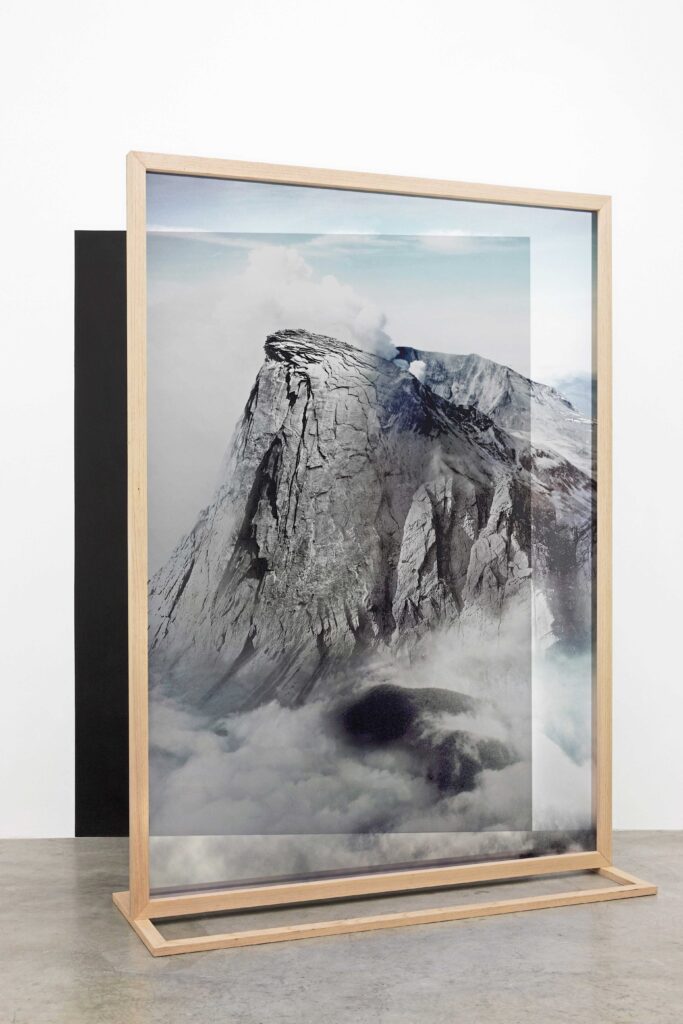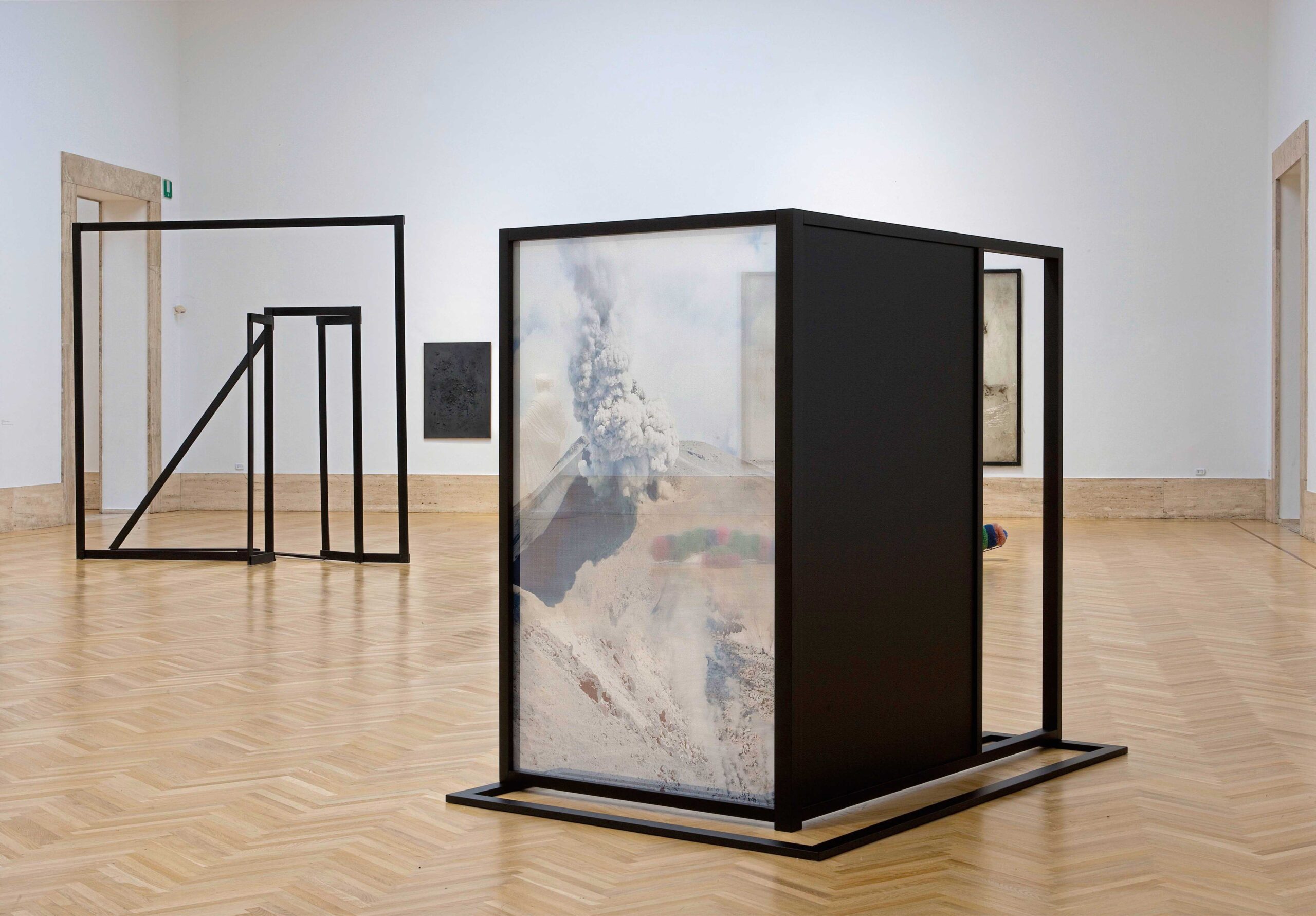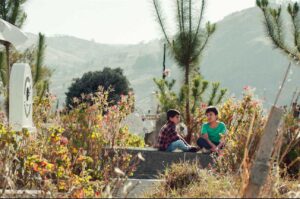This article is adapted from AQ’s special report on Lula and Latin America
In Elena Damiani’s Fading Field N.10, the jagged rocks of a cliffside rise through a foreground filled with clouds. Where is this image drawn from? Look at it quickly and you might mistake it for a real mountainside. But in fact, the work splices together six pictures of different mountains across the U.S. and Latin America—from Mount St. Helens and Yosemite National Park in the U.S., to the El Sangay and El Cotopaxi volcanos in Ecuador. Together, they create a kind of nonplace, a fictional landscape assembled from real historical images.

This work, like others in the Peruvian artist’s Fading Fields series, is printed on silk chiffon and installed in a freestanding wooden frame. The result is a ghostly, almost transparent, image embedded in a spare frame that creates a sense of a doorway into an imagined world. At the right angle, a moonscape of mountains and smoke seems to jump off the silk print, but as soon as you move around the piece, the illusion is lost, and the fabric image, frame and backdrop appear as separate entities.

Fading Fields
Ongoing series by Elena Damiani
The way Damiani’s landscapes seem fractured—whole from one perspective, broken into constituent pieces from another—isn’t accidental: It’s meant to demonstrate how supposedly “definitive” ways of mapping the world are inevitably subjective, even paradoxical.
Damiani’s decision to source her images from institutions like the U.S. Geological Service (USGS) seems likewise intentional. Steeped in traditions of empire and exploration, many of these photos were taken in remote parts of Latin America by photographers hired by the U.S. government, as part of a project to scientifically document the natural world. They’re meant to be authoritative—replacing earlier methods of cartography and draftsmanship. They weren’t just supposed to conjure an idea of the territory, they were supposed to map the territory, and were widely used because of the idea they could provide a more accurate representation of the landscape than previously possible.
In Fading Fields, Damiani shows the limitations of this accuracy. A USGS photographer might capture an image of a remote area of Ecuador—but the meaning of that image is inevitably limited by the time, place and perspective of the photographer. Landscape photography might seem neutral, even apolitical, but there are always social relationships and power dynamics behind the scenes. It’s hardly a stretch to imagine incongruities between a U.S. scientist’s interpretation of the landscape of Ecuador’s El Sangay, and the point of view of those who live in the surrounding valleys.
The way Damiani turns these archival images upside down, as she mixes and matches them, serves to shake loose the notion of their supposedly definitive nature. Her works speak, too, to larger questions about who gets to write the historical record, who has the authority to create maps—and the inevitably subjective nature of representing territory. The Fading Fields series reminds us that the idea of a merely “accurate” representation of landscape is a fiction.
There’s a historical dimension involved, too: Many of the images Damiani uses are decades old, a few taken almost a century ago. And far from being eternal, the landscapes they show have changed, sometimes drastically in the interim, remade by landslides or other forces. Across Damiani’s work, these ghostly crags and mountainsides that no longer exist point to a fundamental paradox of history: the impossibility of recreating a past that can never be known again.
—
Remick is assistant curator of art at Americas Society and organized the installation of Damiani’s Zenith (2022), now on view at Americas Society in New York.








